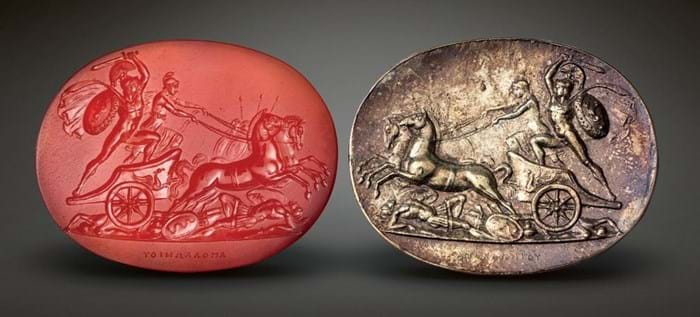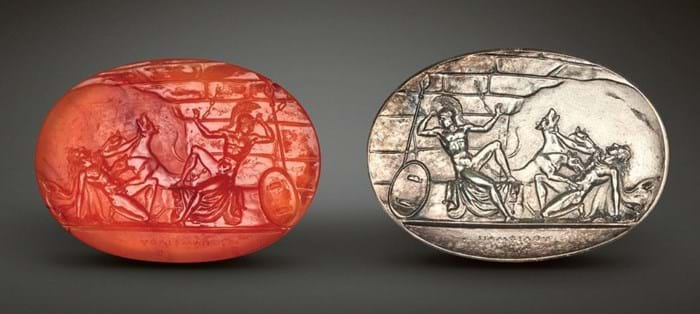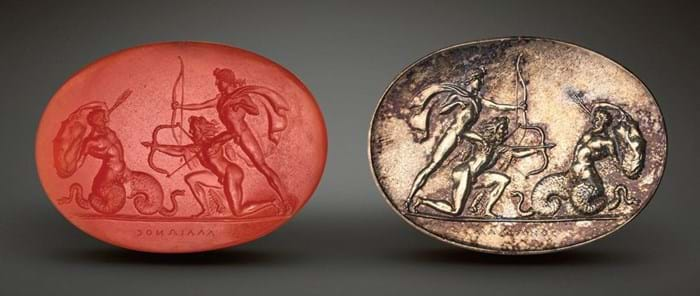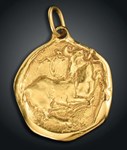During the Grand Tour era, Prince Stanislas Poniatowski (1754-1833), nephew of the king of Poland, had assembled a seemingly peerless collection of 2601 classical intaglios, many ‘signed’ with the names of prominent Greek artists from antiquity such as Pyrgoteles, Aulus, Gaius and Dioscorides.
The quality of the engraving on each gem was outstanding – but they were not ancient.
After the prince’s death it emerged that masquerading as Greek and Roman originals were countless fakes produced by a number of leading contemporary hardstone engravers. Giuseppe Girometti (1780-1851) and brothers Giovanni (1734- 91) and Luigi (1773-1854) Pichler had all worked for Poniatowski.
Throughout the 19th and much of the 20th century Poniatowski gems were tarred with the brush of ‘fakes’ but today they are judged simply as among the finest examples of Grand Tour gem engraving. They come to auction relatively frequently and are eagerly collected. Depending on subject matter and condition, each tends to fetch between £1500-3000.

Four carnelian intaglios and their electrotypes that formed part of a collection of 98 Poniatowski gems sold at Woolley & Wallis for £260,000. Shown here is Theseus chained to the gate of Tartarus while Cerberus tears Pirithous, with Greek pseudo signature Pamphilos.
The jewellery sale at Woolley & Wallis on April 7 offered the rare opportunity to purchase a private collection of 100 hardstone intaglios, 98 of which were ex-Poniatowski.
Mounted on two purpose-built display frames made by jeweller Collingwood & Co when the collection was last sold in the 1970s, each component was accompanied by a faithful electrotype casting. Detailed descriptions were provided in a special bound catalogue.

Four carnelian intaglios and their electrotypes that formed part of a collection of 98 Poniatowski gems sold at Woolley & Wallis for £260,000. Shown here is Patroclus routing the Trojans, with Greek pseudo signature Apollonides.
The Salisbury auction house chose to offer the group as a single lot at £40,000-60,000 and they were hotly contested. After a battle on the phones, they sold to a private Chinese collector at £260,000 (plus 25 % buyer’s premium).


















